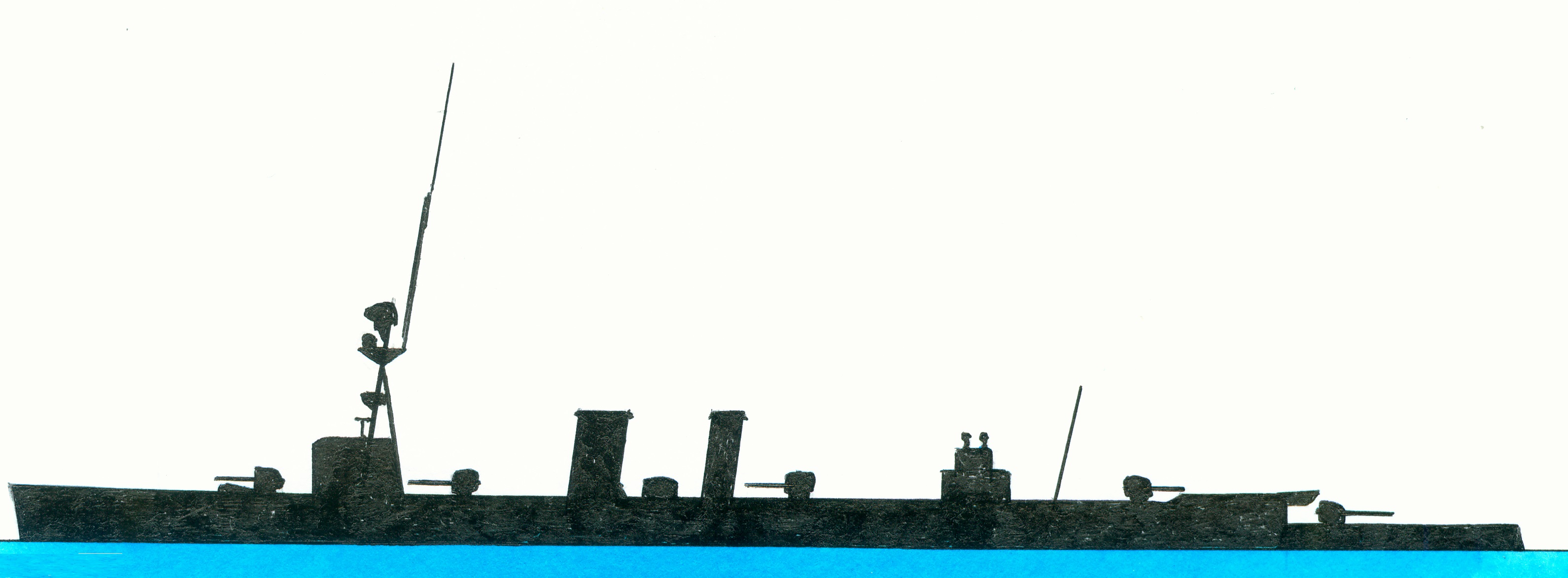Caledon-class
Of the C-class light cruisers class Caledon-subclass consisting of the Caledon, Calypso, Cassandra and Caradoc, preceded by the Arethusa-class and succeeded by the Danae-class. Differs from the preceding sub-classes with slightly changed propulsion and superstructure. Building ordered in December 1917. Laid down by Cammell Laird, Birkenhead, England on 17 March 1916, launched on 25 November 1916, commissioned on 6 March 1917, converted at the Chatham Dockyard, England into an anti aircraft carrier between 14 September 1942-7 December 1943, disarmed in April 1945, sold to be broken up on 23 January 1948 and arrived at Dover Industries, Dover, England to be broken up on 14 February 1948.
Displacement 4.306 (normal)-4.990 (deep load) tons and as dimensions 129,5 (between perpendiculars)-137,2 (over all) x 12,9 x 5,72 (mean at deep load) metres or 425-450 x 42.3 x 18.9 feet. The machinery consisted of 2 steam turbines and 6 Yarrow boilers which supplied via 2 shafts 40.000 shp allowing a speed of 29 knots. Fuel oil bunker capacity 270 (normal)-848 (maximum) tons. Her crew numbered 344 men. The armour consisted of a belt 3,2cm/1.25”-5,7cm/2.25” (bow)-7,6cm/3” (amidships)-5,½”-6,4cm/2.5” (stern). and a 2,5cm/1” thick deck (upper, amidships) and over the rudder. The armament consisted of 12-10,2cm/4” guns, 2-4cm Bofors guns and 8-2cm Oerlikon guns.

